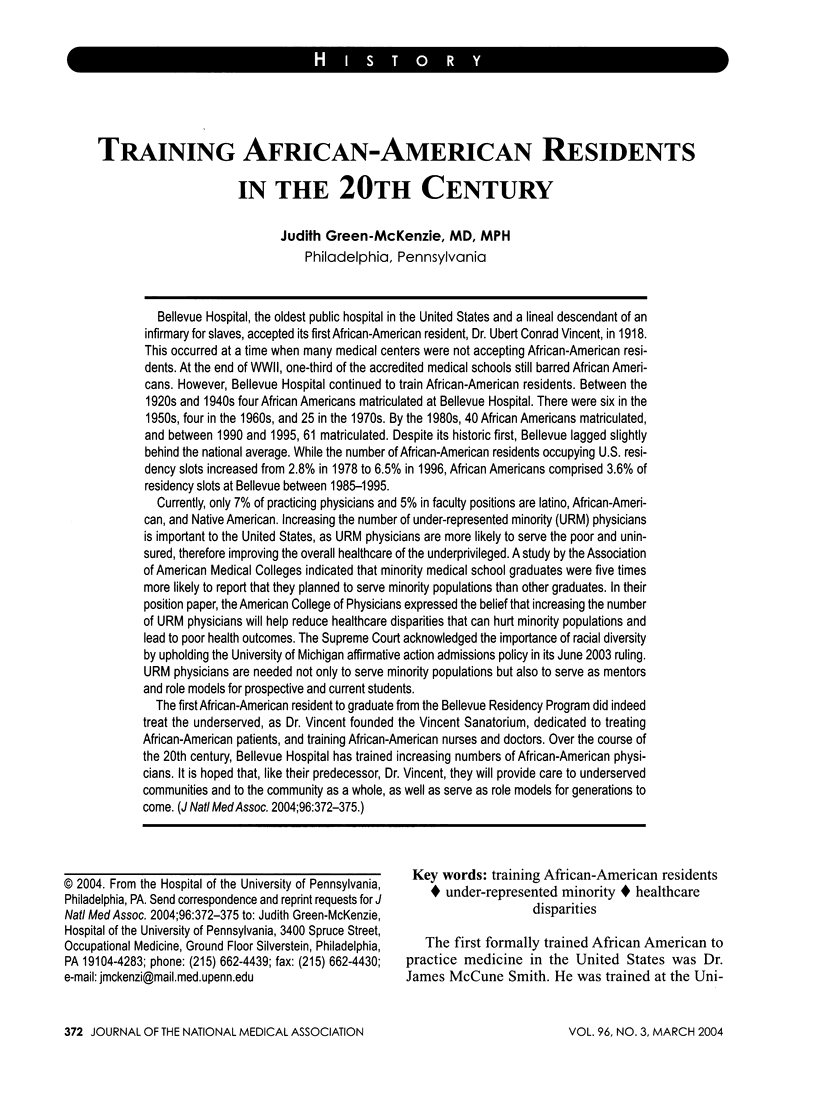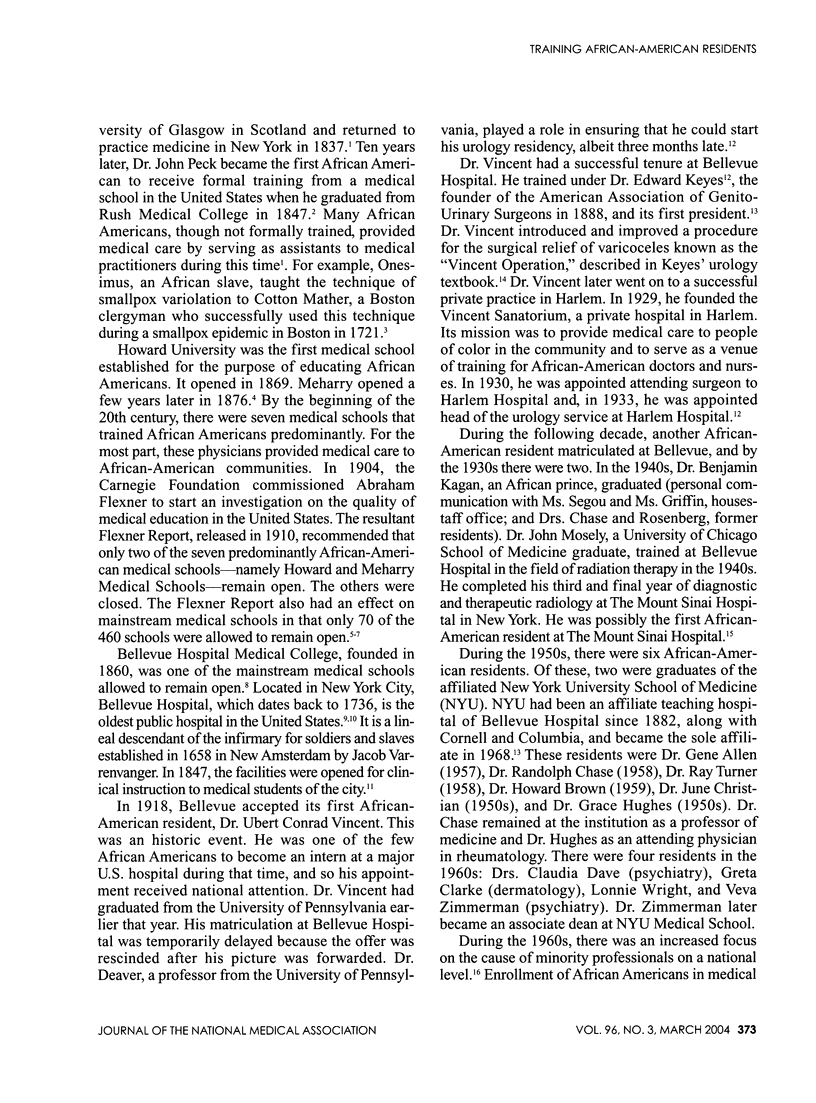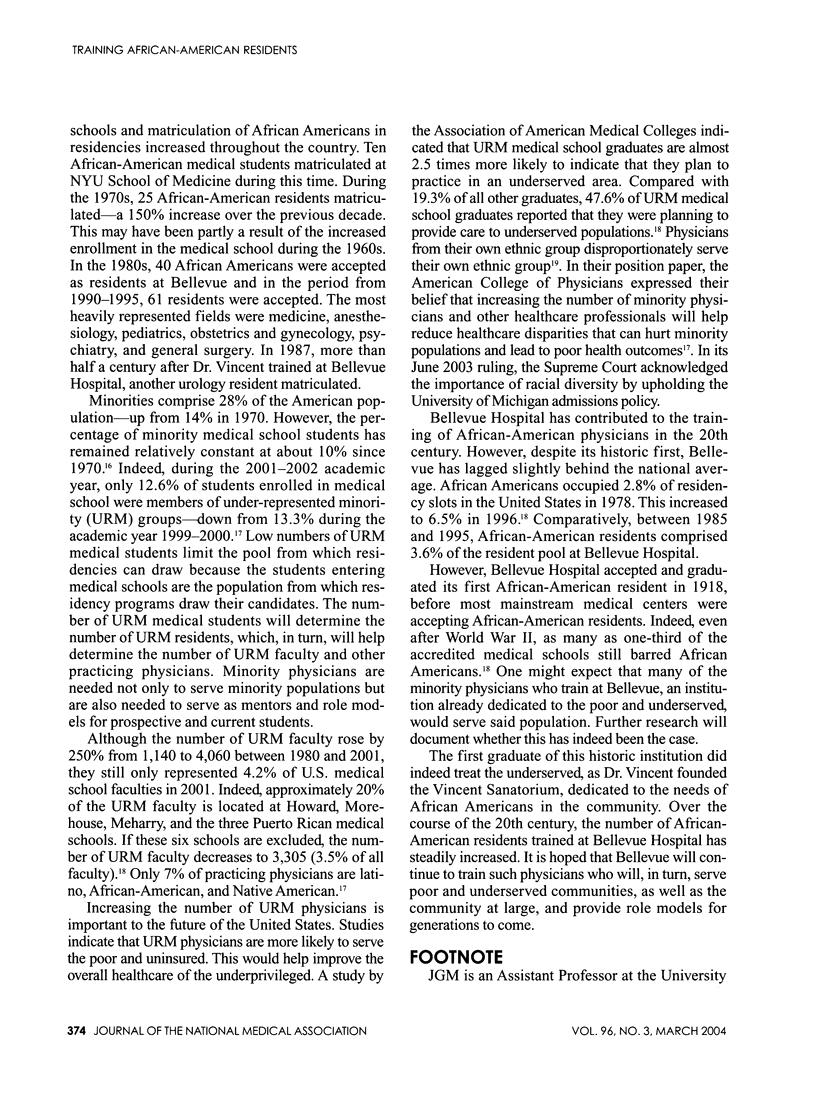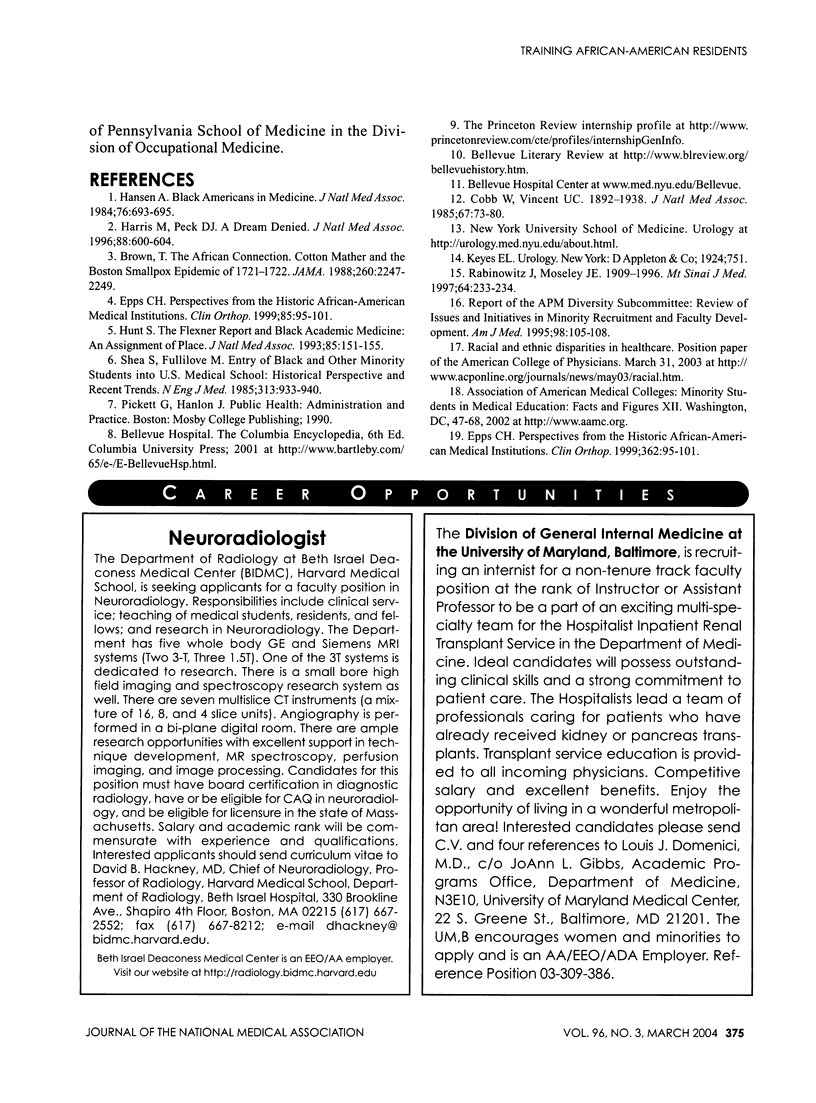Abstract
Bellevue Hospital, the oldest public hospital in the United States and a lineal descendant of an infirmary for slaves, accepted its first African-American resident, Dr. Ubert Conrad Vincent, in 1918. This occurred at a time when many medical centers were not accepting African-American residents. At the end of WWII, one-third of the accredited medical schools still barred African Americans. However, Bellevue Hospital continued to train African-American residents. Between the 1920s and 1940s four African Americans matriculated at Bellevue Hospital. There were six in the 1950s, four in the 1960s, and 25 in the 1970s. By the 1980s, 40 African Americans matriculated, and between 1990 and 1995, 61 matriculated. Despite its historic first, Bellevue lagged slightly behind the national average. While the number of African-American residents occupying U.S. residency slots increased from 2.8% in 1978 to 6.5% in 1996, African Americans comprised 3.6% of residency slots at Bellevue between 1985-1995. Currently, only 7% of practicing physicians and 5% in faculty positions are latino, African-American, and Native American. Increasing the number of under-represented minority (URM) physicians is important to the United States, as URM physicians are more likely to serve the poor and uninsured, therefore improving the overall healthcare of the underprivileged. A study by the Association of American Medical Colleges indicated that minority medical school graduates were five times more likely to report that they planned to serve minority populations than other graduates. In their position paper, the American College of Physicians expressed the belief that increasing the number of URM physicians will help reduce healthcare disparities that can hurt minority populations and lead to poor health outcomes. The Supreme Court acknowledged the importance of racial diversity by upholding the University of Michigan affirmative action admissions policy in its June 2003 ruling. URM physicians are needed not only to serve minority populations but also to serve as mentors and role models for prospective and current students. The first African-American resident to graduate from the Bellevue Residency Program did indeed treat the underserved, as Dr. Vincent founded the Vincent Sanatorium, dedicated to treating African-American patients, and training African-American nurses and doctors. Over the course of the 20th century, Bellevue Hospital has trained increasing numbers of African-American physicians. It is hoped that, like their predecessor, Dr. Vincent, they will provide care to underserved communities and to the community as a whole, as well as serve as role models for generations to come.
Full text
PDF



Selected References
These references are in PubMed. This may not be the complete list of references from this article.
- Brown T. H. The African connection. Cotton Mather and the Boston smallpox epidemic of 1721-1722. JAMA. 1988 Oct 21;260(15):2247–2249. doi: 10.1001/jama.260.15.2247. [DOI] [PubMed] [Google Scholar]
- Cobb W. M. Ubert Conrad Vincent, B.S., M.D., 1892-1938. J Natl Med Assoc. 1975 Jan;67(1):73–80. [PMC free article] [PubMed] [Google Scholar]
- Epps C. H., Jr Perspectives from the historic African American medical institutions. Clin Orthop Relat Res. 1999 May;(362):95–101. [PubMed] [Google Scholar]
- Epps C. H., Jr Perspectives from the historic African American medical institutions. Clin Orthop Relat Res. 1999 May;(362):95–101. [PubMed] [Google Scholar]
- Hansen A. C. Black Americans in medicine. J Natl Med Assoc. 1984 Jul;76(7):693–695. [PMC free article] [PubMed] [Google Scholar]
- Harris M. J. David Jones Peck, MD: a dream denied. J Natl Med Assoc. 1996 Sep;88(9):600–604. [PMC free article] [PubMed] [Google Scholar]
- Hunt S. The Flexner Report and black academic medicine: an assignment of place. J Natl Med Assoc. 1993 Feb;85(2):151–155. [PMC free article] [PubMed] [Google Scholar]
- Rabinowitz J. G. John E. Moseley, M.D. 1909-1996. Mt Sinai J Med. 1997 May;64(3):233–234. [PubMed] [Google Scholar]
- Shea S., Fullilove M. T. Entry of black and other minority students into U.S. medical schools. Historical perspective and recent trends. N Engl J Med. 1985 Oct 10;313(15):933–940. doi: 10.1056/NEJM198510103131506. [DOI] [PubMed] [Google Scholar]


